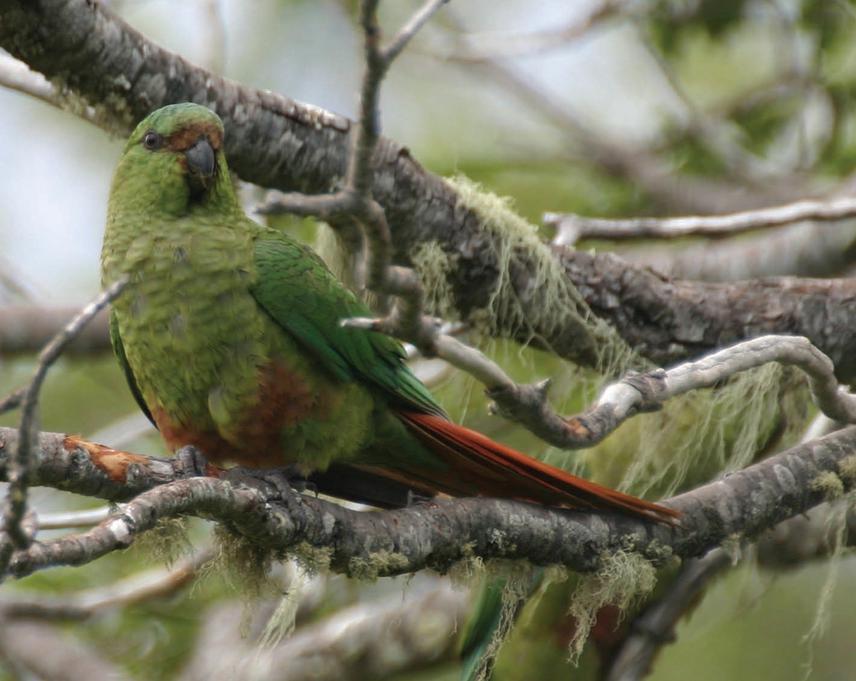Soledad Diaz
Other projects
28 Mar 2008
Enicognathus Ferrugineus (Aves, Psittacidae) Dietary, Reproductive and Habitat Selection Aspects in Araucaria araucana Forests
The Project goals are to intensify conservation of this valuable habitat by increasing its knowledge and use this information for management, education and conservation for sustainable purposes.

© PsittaScene, February 2008
Critical factors for the presence of parrots everywhere are: food, which is for the most part supplied by trees; and nest-sites, which are for the most part supplied by old trees: conservationists are discovering that the local decline or extinction of many sedentary parrots from ostensible “good habitat” is directly related to the decline and loss of nesting opportunities, which is as much to say that habitat without nest-sites is not habitat at all.
Maintaining biodiversity in forests requires knowledge of how different plants and animals respond to natural forest dynamics. Of the many species that inhabit forests, those that use tree cavities are considered to be among the most vulnerable to forests changes. By understanding the habitat requirements of cavity nesters (e.g., minimum tree diameter, stand density) we will be able to develop conservation activities for these species. Due to the reduction of continuous forests in Patagonia, the conservation strategy developed for this guild may allow them to function as an umbrella species for conservation of the forest ecosystem as a whole.
One of the most emblematic secondary cavity nester of austral temperate forests is the endemic Austral Parakeet, Enicognathus ferrugineus, the southernmost distributed psitacid of the world. This parakeet may be used as key species to evaluate Araucaria araucana forest as a suitable environment for cavity nesters by understanding their habitat requirements.
Main Field Work:
1. Population: Determine Enicognathus ferrugineus population status after 2008-09 declines.
2. Breeding: Determine the effect of Araucaria araucana masting – massive seed production- year on Enicognathus ferrugineus breeding behaviour.
3. Nesting: Quantify Enicognathus ferrugineus nesting sites key characteristics. 168 ha of forest will be searched for nests, along a gradient of Araucaria density in mixed forests with Nothofagus pumilio.
Our conservation actions against parrot trade are driven by the results of our own research and that of colleagues. Since 2007, we have used posters, TV, radio, and schools visits to reduce capture of Austral Parakeets. For 2010, our public education efforts will focus on expanding conservation education throughout the main Patagonian National Parks: Nahuel Huapi and Lanin, with the central message of the importance of keeping nest trees for cavity-nesting birds.